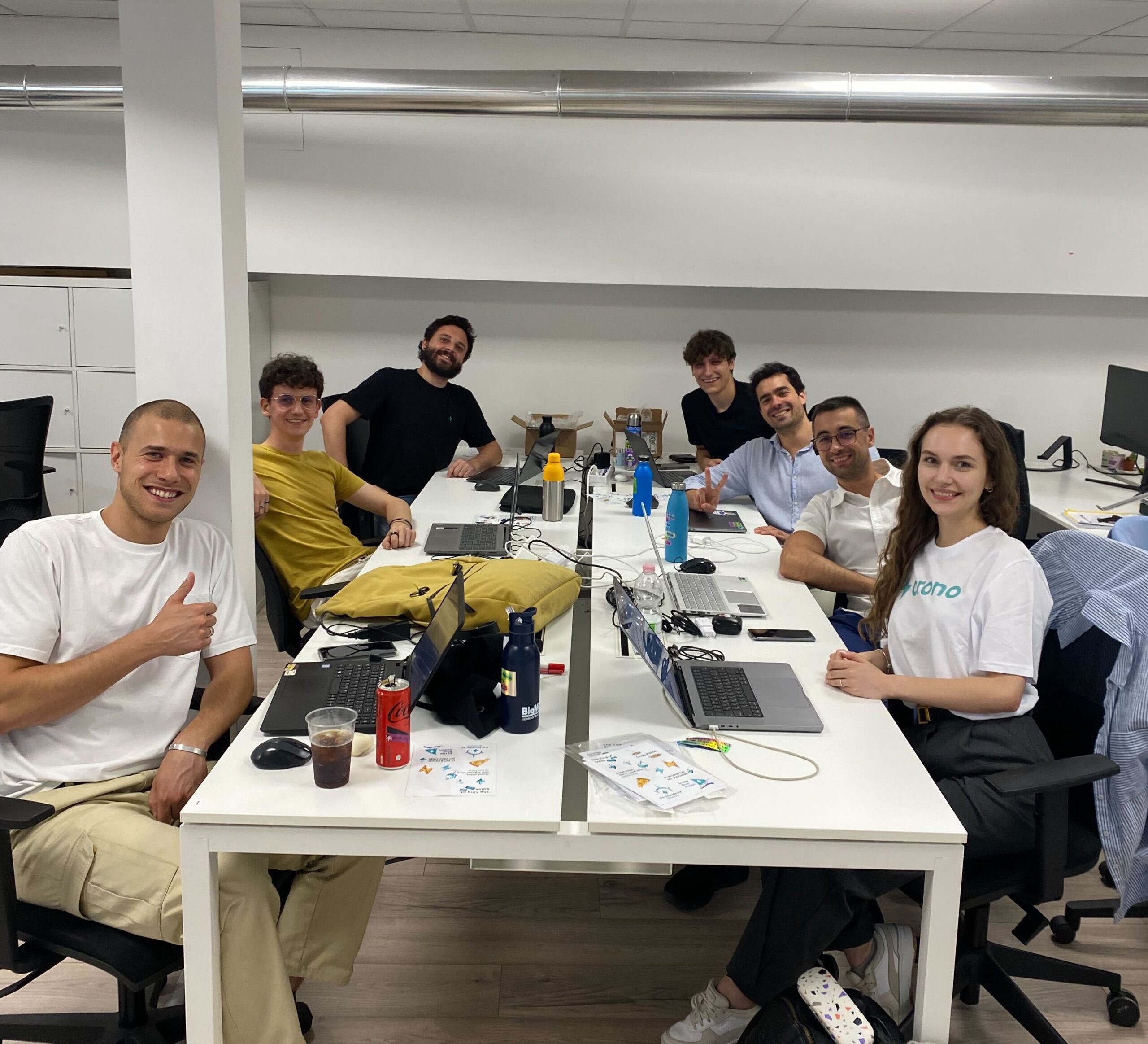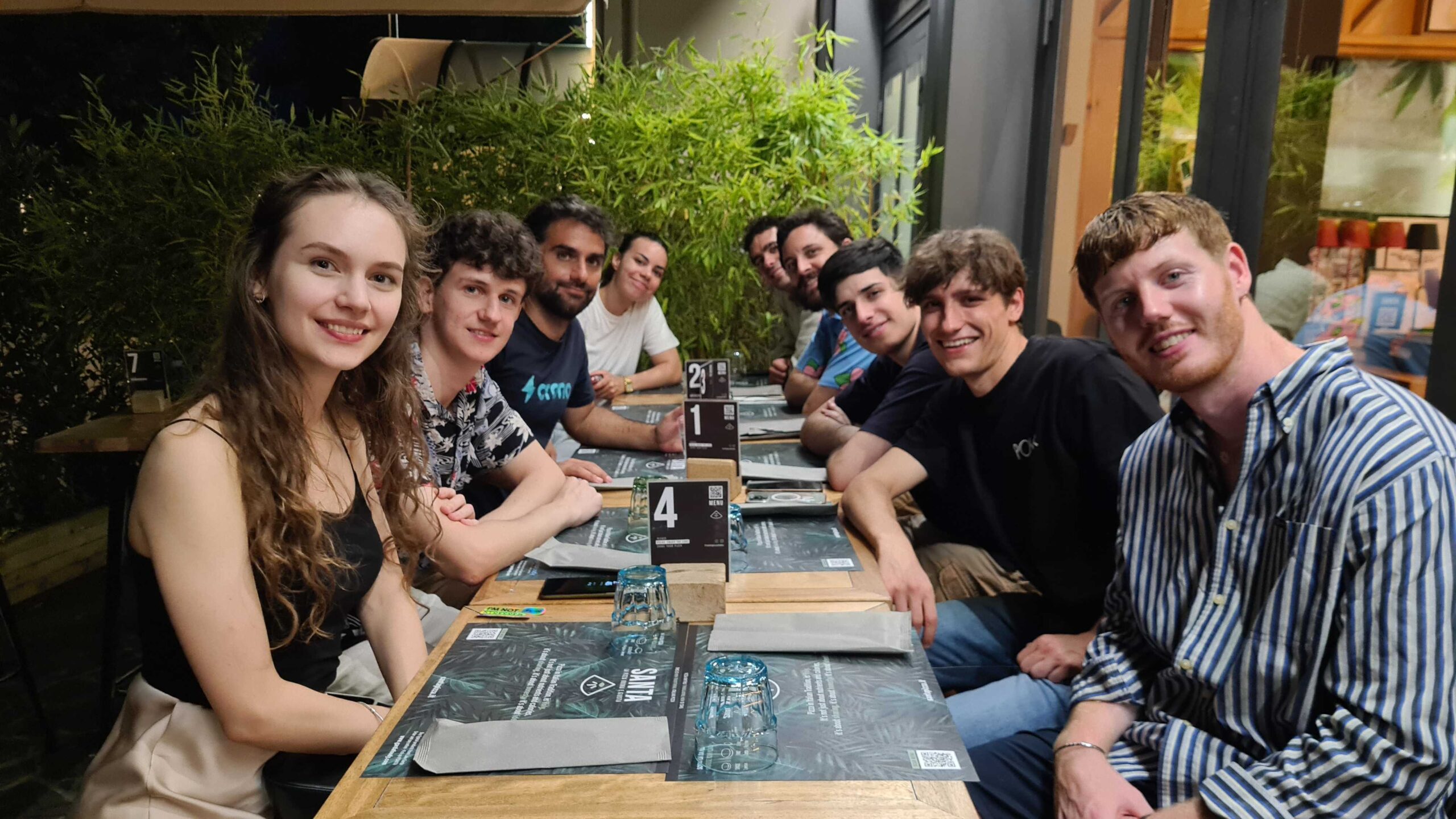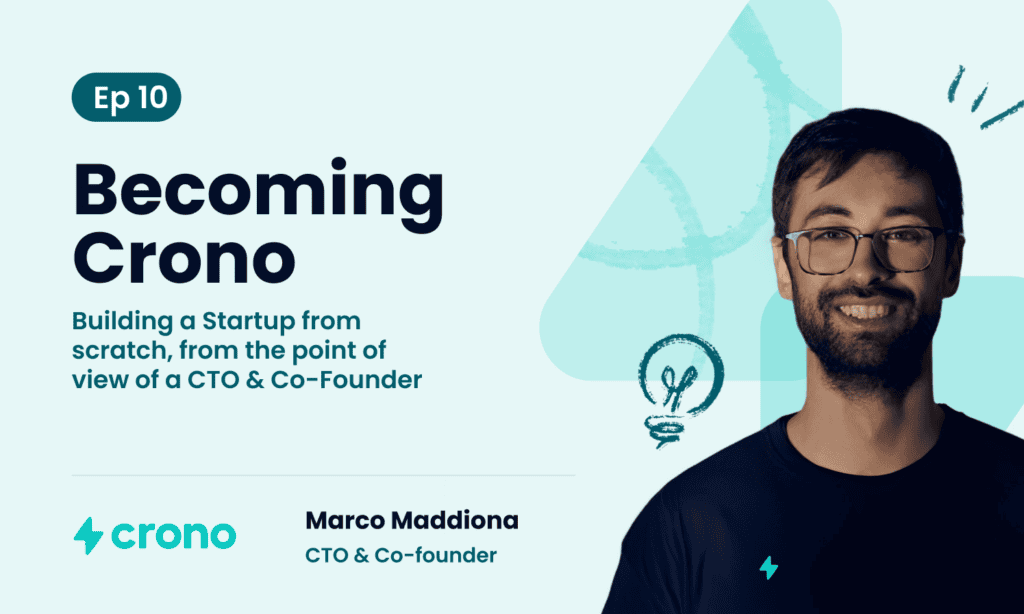Building a startup from an idea can be an exciting adventure that tests resilience, passion, and commitment. It’s about creating something entirely new and adopting the right mindset to turn it into a successful reality.
With “Becoming Crono” we’ll revisit our starting point through an honest and captivating memoir written by our CTO, Marco Maddiona.
Each month, you’ll have the opportunity to witness firsthand the steps that propelled Crono into a startup with a €500,000 pre-seed investment. This will encompass the obstacles we overcame and the choices we made. Have you ever wondered what it’s like to develop software while building a business?
Enjoy our new episode of Becoming Crono!
Ep. 10 - Summer growth
Hi Croners, I’m Marco Maddiona, CTO & Co-Founder of Crono, welcome back! In case you have missed the previous episodes head here to read the very start of our adventure. Now, let’s dive right into our story!
In the last article, we left off in the summer of 2024, to be precise, June.
As I had shared before, in the months leading up to this point, we had been studying intensively to improve our value proposition, both in terms of product and commercial strategy. It was essential to keep working on the software to bring this vision to life and to enhance both the user workflow and the overall quality of our platform and its features.
June and July turned out to be two months of very intense work. In addition to focusing on execution, we invested a lot of resources at the team level to support the onboarding of two new team members: Dima (backend) and Nicu (frontend).
Managing the onboarding process, especially in a small team, is never easy. Many procedures and work methodologies often only exist in team members’ minds, and it requires a double effort to transmit knowledge and ensure the new members are up and running from day one.
Onboarding in Startups vs. Larger Teams
However, when someone new joins, they bring their own knowledge and methodologies into the team.
In our case, after discussing with the new members, we found the best way to facilitate their integration by transforming the knowledge transfer into documentation and sharing our working methodologies through the creation of procedures and conventions to be adopted at the team level.
For those who have worked in structured teams and environments, these things are often taken for granted.
However, they cannot be assumed in a startup, especially in the early stages, when all available resources are typically invested in development, and everything else is handled more haphazardly. As the company grows, improvements in team management, documentation, and the sharing of procedures and conventions become essential to simplify work, help new members integrate smoothly, and make everyone more aware and productive
I was satisfied with the teamwork we achieved, and every individual was incredibly supportive in welcoming the new arrivals, just as a true team should be.
Commercial Growth and Client Recognition
Meanwhile, on the commercial side, many opportunities were beginning to open up: clients were now recognizing Crono as a competitor on par with the industry leaders we had been chasing for almost two years.
Despite our younger age, we were managing to convert many clients, even pulling them away from bigger companies.
Every time this happened, it was a small but significant satisfaction, serving as proof of the progress we were making.
Those two months, in terms of results, proved to be the best yet in the first two years of Crono’s existence.
Attentive readers will recall seeing this phrase multiple times in my blog. It’s a common expression we often use within our team, but seeing it written down now makes me reflect on how normal it becomes when a startup is going through a growth phase.
Monitoring month-over-month growth is an excellent KPI to track the progress of a startup. Of course, for a SaaS business, it’s difficult to improve every single month, especially since sales are often tied to external factors or work periods. For example, in August, many companies close, meaning that sales teams—our users—have less work to do.
The key is to look at the overall yearly or quarterly trend. This is a positive sign for any startup.
Celebrating Crono's 2nd anniversary
July is a particularly meaningful month for us, as our anniversary falls on the 28th. This year, we managed to bring part of the team working abroad together in Italy.
For a few days, 10 Croners worked side by side in the same room at the C30 offices in Milan, and it was a fantastic experience for a team that usually works remotely.

The speed at which information flows, the ability to have discussions without needing to go through a screen or headphones, and observing the operations of other teams was a snapshot that perfectly described how much work we’re putting in daily and how much commitment and dedication everyone is contributing to our shared goal.
When we started two years ago, alongside Lorenzo, Marco, and Alex, I couldn’t have imagined what it would mean to have such a united team collaborating for a single cause. All the efforts that we, the founders, have made—and continue to make—would have been in vain if we hadn’t found people just as motivated and excited to join our project.
We are all growing alongside Crono, and I am infinitely grateful for their hard work.
Celebrations & renovation
On Friday, the 26th, we relocated to Lake Garda and took the opportunity to spend a weekend of fun and relaxation together.
Between swimming, giant pizzas, tastings, and lakeside walks, we had the chance to get to know each other better and form connections that will last even when everyone returns to their everyday lives in their respective cities.
After celebrating Crono’s second birthday, we returned to normal life, more energized than ever.

August is traditionally a month of vacation. The pace tends to slow down for everyone, especially clients, and there’s more time to focus on product development.
For our team, it’s the perfect month to continue working on new features, without distractions from external sources or client-specific requests.
In fact, we received a request from a potential client, a major international player, who was interested in trying Crono and then deciding whether to implement it across their European team.
A technical challenge for a potential client
There was one technical and administrative challenge we weren’t fully prepared for: this potential client wanted to use a single subscription and allow each user to pay separately for their individual subscription (a non-standard practice in the SaaS world and not natively supported by Stripe).
As had happened before, we needed to decide whether to take the risk of implementing a technical solution to overcome this obstacle (along with other necessary integrations) for a potential client we weren’t sure would actually purchase our licenses.
As you know, here at Crono, we love challenges like these, and our past experience has taught us that every time we’ve attempted to close a large client, we’ve had to implement technical solutions that ultimately benefited other clients in the long run.
Keep reading the blog to discover how this challenge turned out!
